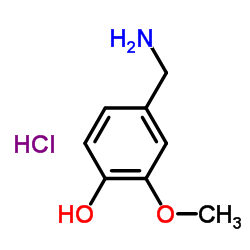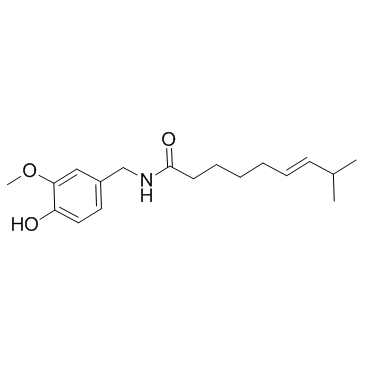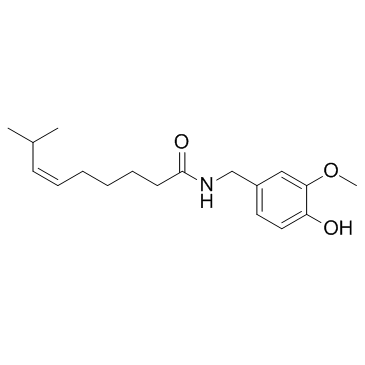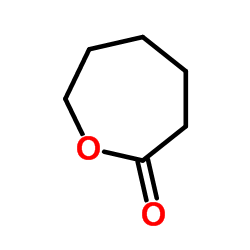Dihydrocapsaicin

Dihydrocapsaicin structure
|
Common Name | Dihydrocapsaicin | ||
|---|---|---|---|---|
| CAS Number | 19408-84-5 | Molecular Weight | 307.428 | |
| Density | 1.0±0.1 g/cm3 | Boiling Point | 457.3±55.0 °C at 760 mmHg | |
| Molecular Formula | C18H29NO3 | Melting Point | 62-65 °C(lit.) | |
| MSDS | Chinese USA | Flash Point | 230.4±31.5 °C | |
| Symbol |

GHS06 |
Signal Word | Danger | |
Use of DihydrocapsaicinDihydrocapsaicin is a natural capsaicin, acts as a selective TRPV1 agonist, and also increases p-Akt levels. Dihydrocapsaicin enhances the hypothermia-induced neuroprotection[1][2]. |
| Name | dihydrocapsaicin |
|---|---|
| Synonym | More Synonyms |
| Description | Dihydrocapsaicin is a natural capsaicin, acts as a selective TRPV1 agonist, and also increases p-Akt levels. Dihydrocapsaicin enhances the hypothermia-induced neuroprotection[1][2]. |
|---|---|
| Related Catalog | |
| References |
| Density | 1.0±0.1 g/cm3 |
|---|---|
| Boiling Point | 457.3±55.0 °C at 760 mmHg |
| Melting Point | 62-65 °C(lit.) |
| Molecular Formula | C18H29NO3 |
| Molecular Weight | 307.428 |
| Flash Point | 230.4±31.5 °C |
| Exact Mass | 307.214752 |
| PSA | 58.56000 |
| LogP | 4.72 |
| Vapour Pressure | 0.0±1.2 mmHg at 25°C |
| Index of Refraction | 1.508 |
| InChIKey | XJQPQKLURWNAAH-UHFFFAOYSA-N |
| SMILES | COc1cc(CNC(=O)CCCCCCC(C)C)ccc1O |
| Storage condition | 2-8°C |
| Water Solubility | H2O: insoluble |
CHEMICAL IDENTIFICATION
HEALTH HAZARD DATAACUTE TOXICITY DATAMUTATION DATA
|
| Symbol |

GHS06 |
|---|---|
| Signal Word | Danger |
| Hazard Statements | H301-H315-H319-H335 |
| Precautionary Statements | P261-P301 + P310-P305 + P351 + P338 |
| Personal Protective Equipment | Eyeshields;Faceshields;Gloves;type P2 (EN 143) respirator cartridges |
| Hazard Codes | T:Toxic; |
| Risk Phrases | R25;R36/37/38 |
| Safety Phrases | S22-S26-S28-S36/39-S45-S36/37/39 |
| RIDADR | UN 2811 6.1/PG 2 |
| WGK Germany | 3 |
| RTECS | RA8530000 |
| Packaging Group | II |
| Hazard Class | 6.1(a) |
| HS Code | 3302109090 |
| Precursor 9 | |
|---|---|
| DownStream 0 | |
| HS Code | 2924299090 |
|---|---|
| Summary | 2924299090. other cyclic amides (including cyclic carbamates) and their derivatives; salts thereof. VAT:17.0%. Tax rebate rate:13.0%. . MFN tariff:6.5%. General tariff:30.0% |
|
Chemical genetics reveals a complex functional ground state of neural stem cells.
Nat. Chem. Biol. 3(5) , 268-273, (2007) The identification of self-renewing and multipotent neural stem cells (NSCs) in the mammalian brain holds promise for the treatment of neurological diseases and has yielded new insight into brain canc... |
|
|
Inhibition by capsaicin and its related vanilloids of compound action potentials in frog sciatic nerves.
Life Sci. 92(6-7) , 368-78, (2013) Although capsaicin not only activates transient receptor potential vanilloid-1 (TRPV1) channels but also inhibits nerve conduction, the latter action has not yet been fully examined. The purpose of th... |
|
|
Optimization and validation of liquid chromatography and headspace-gas chromatography based methods for the quantitative determination of capsaicinoids, salicylic acid, glycol monosalicylate, methyl salicylate, ethyl salicylate, camphor and l-menthol in a topical formulation.
J. Pharm. Biomed. Anal. 60 , 51-8, (2012) Capsaicinoids, salicylic acid, methyl and ethyl salicylate, glycol monosalicylate, camphor and l-menthol are widely used in topical formulations to relieve local pain. For each separate compound or si... |
| N-(4-Hydroxy-3-methoxybenzyl)-8-methylnonanamide |
| Nonanimidic acid, N-[(4-hydroxy-3-methoxyphenyl)methyl]-8-methyl-, (1Z)- |
| (1Z)-N-(4-Hydroxy-3-methoxybenzyl)-8-methylnonanimidic acid |
| 6,7-Dihydrocapsaicin |
| 8-methyl-nonanoic acid vanillylamide |
| N-[(4-Hydroxy-3-methoxy-phenyl)methyl]-8-methyl-nonanamide |
| Nonanamide,8-methyl-N-vanillyl |
| Dihydro Capsaicin |
| MFCD00017259 |
| N-[(4-hydroxy-3-methoxyphenyl)methyl]-8-methylnonanamide |
| Nonanamide, N-[(4-hydroxy-3-methoxyphenyl)methyl]-8-methyl- |
| 8-Methyl-N-vanillyl-nonamide |
| Dihydrocapsaicin |
| Nonanamide, 8-methyl-N-vanillyl- |
| EINECS 206-969-8 |
| 8-Methyl-N-vanillylnonanamide |
| N-(4-hydroxy-3-methoxybenzyl)isodecanamide |
 CAS#:10266-06-5
CAS#:10266-06-5 CAS#:201230-82-2
CAS#:201230-82-2 CAS#:7149-10-2
CAS#:7149-10-2 CAS#:404-86-4
CAS#:404-86-4 CAS#:25775-90-0
CAS#:25775-90-0 CAS#:502-44-3
CAS#:502-44-3 CAS#:6654-36-0
CAS#:6654-36-0 CAS#:4547-43-7
CAS#:4547-43-7 CAS#:59320-77-3
CAS#:59320-77-3
